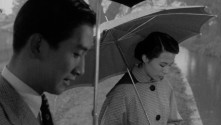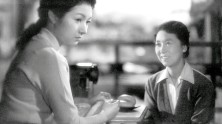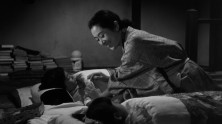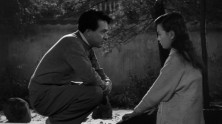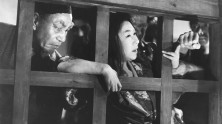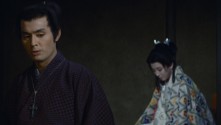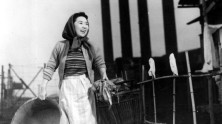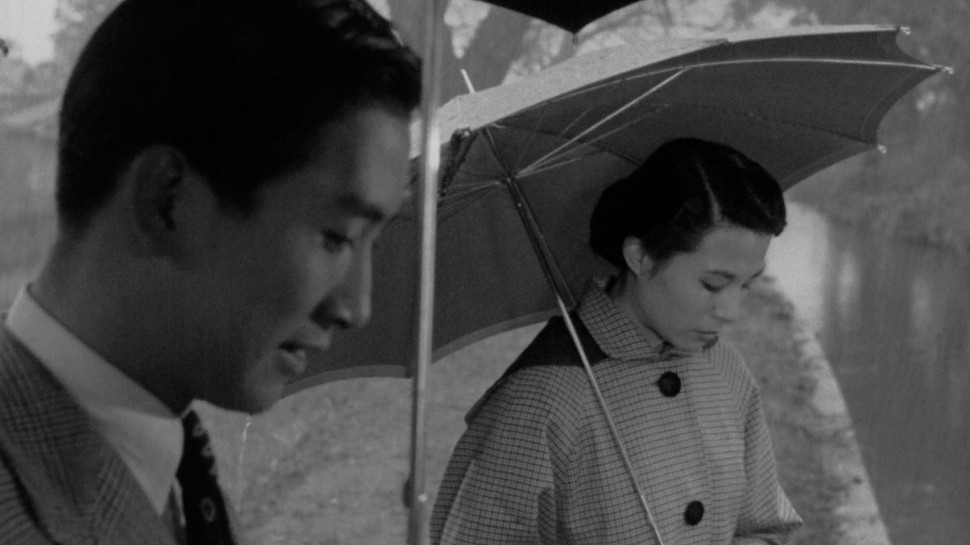
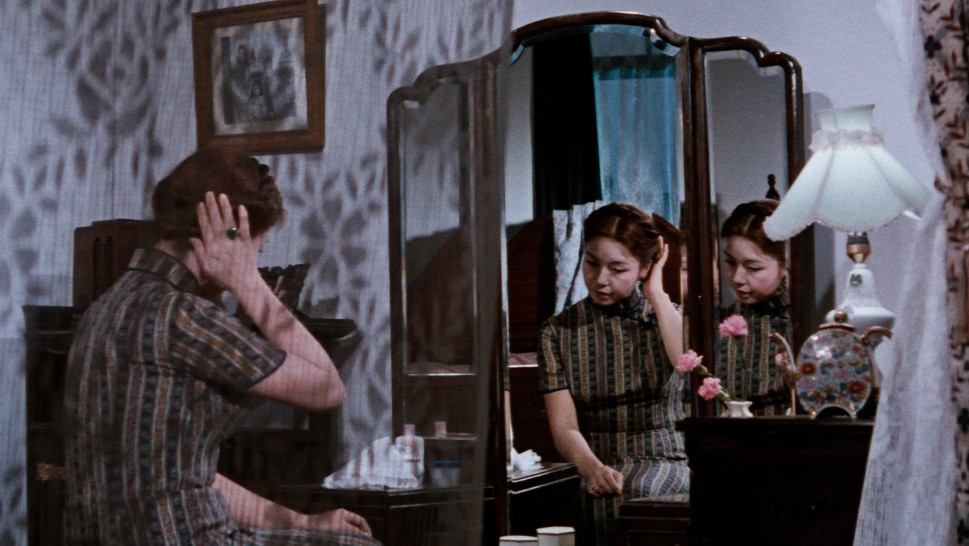
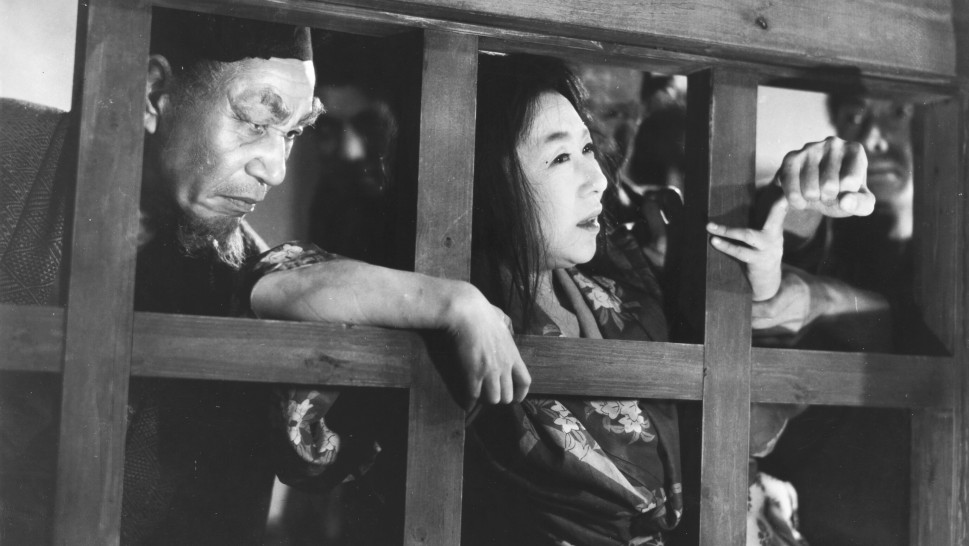
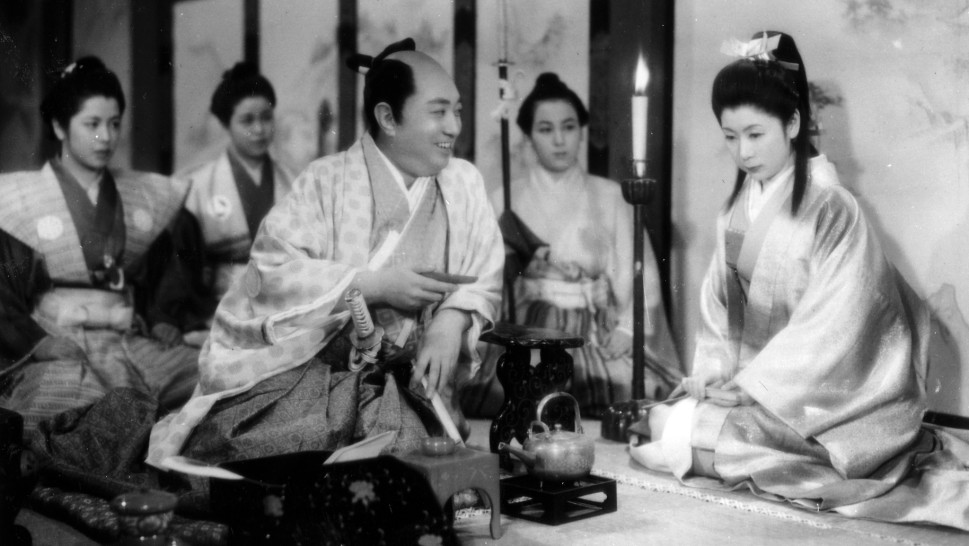
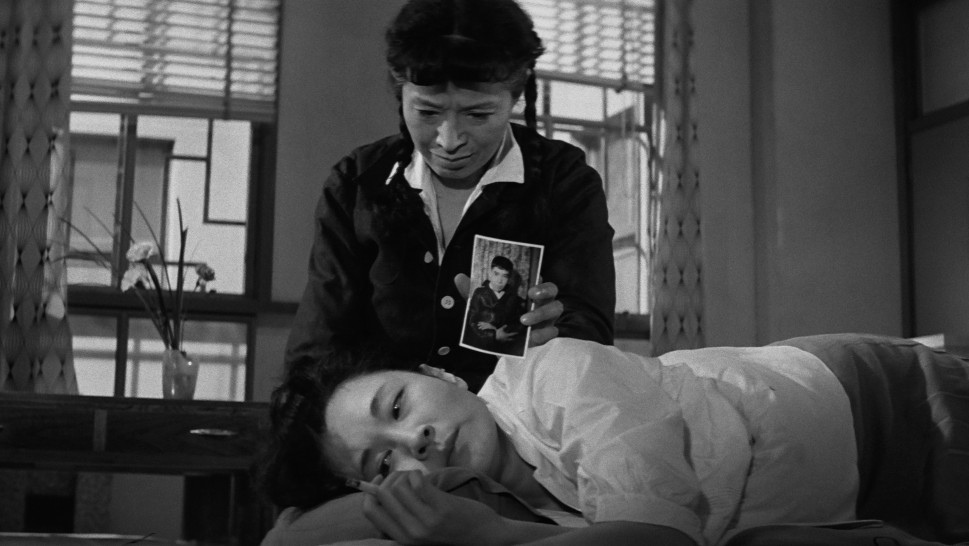
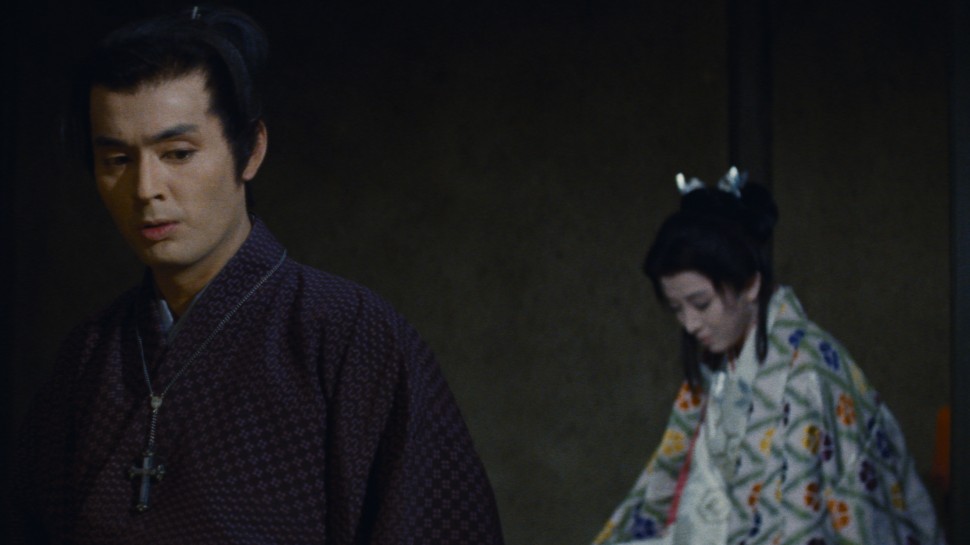

Kinuyo Tanaka—Actress, Director, Pioneer
A legend of the Japanese cinema, Kinuyo Tanaka (1909 – 1977) brought her luminous presence and incomparable talents as an actress to an extraordinary number of landmark films, including key works by renowned directors such as Heinosuke Gosho, Keisuke Kinoshita, Kenji Mizoguchi, Mikio Naruse and Yasujiro Ozu. Although Tanaka played a wide range of leading roles during her long and storied career, she is best remembered for portraying women who find courage and dignity in the face of severe adversity. It is tempting to read Tanaka’s vivid embodiment of noble suffering as an expression of her own difficult life experience after the premature death of her father thrust her family into poverty. It was Tanaka, the youngest of eight brothers and sisters, who took on the role of principal breadwinner by finding early fame as a performer—first on the musical stage, at the tender age of nine, and soon after in her first screen roles, as a child actor in silent films. By the 1930s Tanaka was firmly established as one of Japan’s major stars, earning her the lead role in such prominent productions as the country’s first fully synchronized talking picture. Tanaka’s acclaim rose even further after WWII as the Japanese cinema entered what many have called its Second Golden Age, most notably through her indelible lead performances in three masterworks that crown Mizoguchi’s acclaimed series of films about singular women buffeted by inexorable historical forces: Ugetsu, Sansho the Bailiff and The Life of Oharu.
At the very height of her fame, Tanaka launched a remarkable and unprecedented parallel career as a filmmaker, directing six films between the years 1952 – 1963 that expanded and gave explicit feminist perspective to themes central to her work as an actress. Tanaka was only the second woman to direct a feature film in the Japanese studio system (before her came Tazuko Sakane whose sole film, New Clothing (1936), is sadly lost) and one of the very few woman narrative filmmakers active anywhere in the world. Supported and encouraged by director mentors with whom she had worked, including Kinoshita and Ozu—who each, in fact, offered her choice scripts to direct—Tanaka also took full advantage of her networks of fellow actors and technicians to collaborate with some of the major talents of the postwar era. Mizoguchi, in contrast, openly sought to keep his biggest star from filmmaking, wielding his position as Chair of the Director’s Guild to try to block Tanaka from being allowed to direct.
In her powerful debut feature, Love Letter, Tanaka subtly but effectively announced her aim as director to offer complex, realistic and lastingly relevant explorations of the experiences of Japanese women and the sociocultural and historical forces set against them. A moving exploration of trauma and heartache set in the back-alley world of Occupation-era Tokyo, Love Letter effectively counterbalances the perspective of a melancholy veteran soldier with that of his guilt-ridden ex-lover whose dark yet all-too common secret Tanaka gently humanizes. Her third film and arguably her masterpiece, Forever a Woman, went even further with its moving and taboo-shattering portrait of a sexually liberated poet fighting against breast cancer. In subsequent works Tanaka continued to give prominence and human dimension to the perspective of Japanese women explored in a range of different situations—from the story of former sex workers trying to reform in Girls of the Night, to a young princess forced into marriage in WWII-era Mongolia in The Wandering Princess, and, in Love Under the Crucifix, the tale of a young woman trapped by the rigid class hierarchy and religious prejudice of 16th century feudalistic society. Tanaka gave herself a minor role in her only comedy, the lovely The Moon Has Risen, and uses her small part to render an insightful homage to the subtle craft and art of screen acting.
Until quite recently Tanaka’s singular work as a filmmaker has been under-appreciated and, ironically, overshadowed by her towering status as an actress. Seen together, her very distinct films reveal Tanaka as a major director and unsung pioneer of feminist cinema who paved the way for women filmmakers in Japan and around the world. The Harvard Film Archive is pleased to present all six of Tanaka’s features accompanied by a showcase of her work as an actress from the same years she was also directing, giving the rare opportunity to explore, on the big screen, the rich dialogue active across her work before and behind the camera. – Haden Guest
